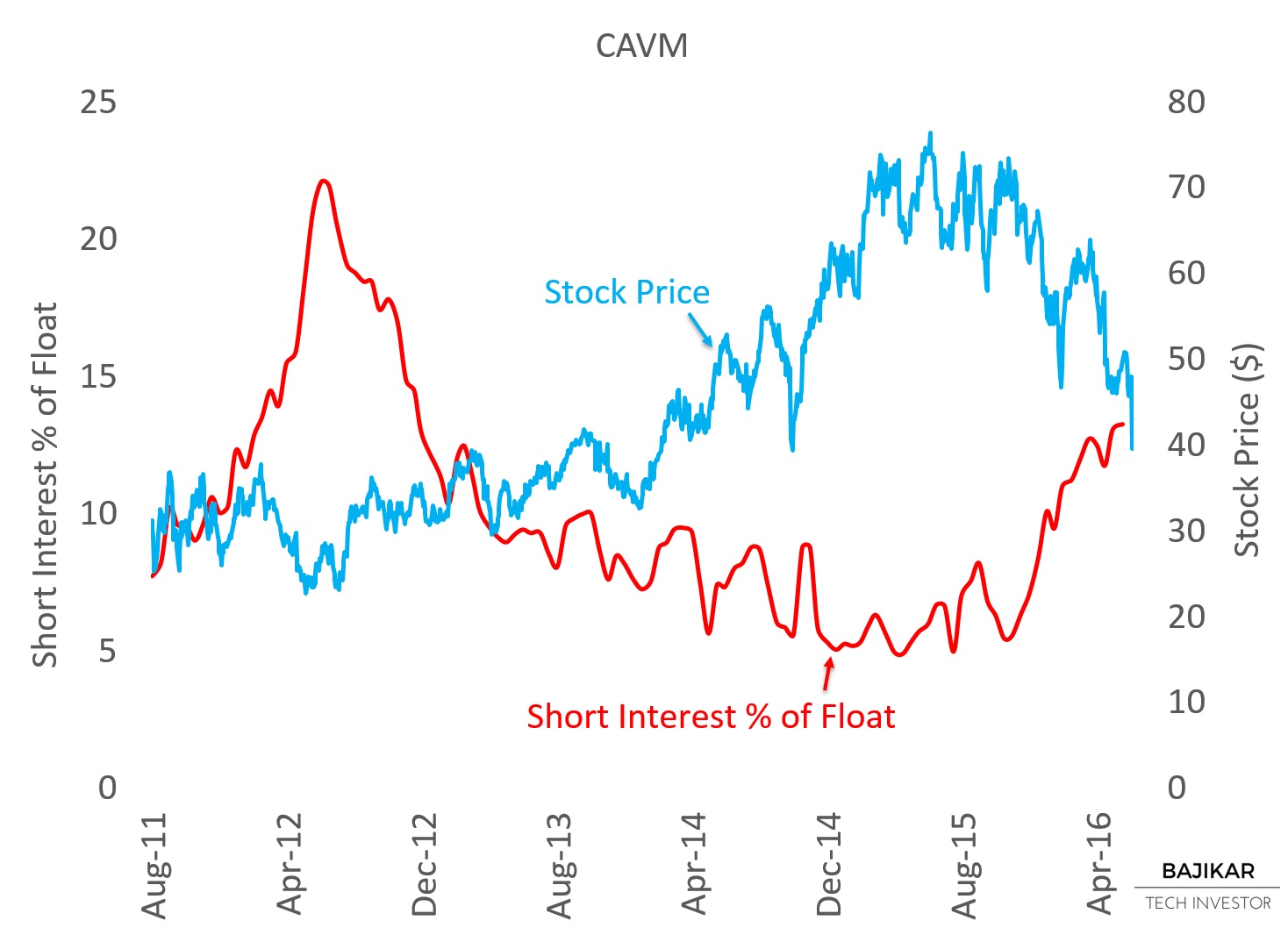The chart shows that short interest (number of shares sold short as a % of float) in CAVM started increasing in late-2015, and remained elevated leading into announcement of QLGC acquisition last week.

The last time short interest was elevated was in 2012, which I previously wrote about here. Higher short interest would serve to increase margin of safety for investors who want to initiate a long position in a stock. In the case of CAVM, here is a list of potential developments that could cause a “short squeeze”, a process that results from short sellers abandoning their short theses and covering their positions (i.e. buying shares):
1. better than expected ramp of new products (ThunderX, LiquidIO2, Liquid Security, Xpliant) potentially starting as early as 2H16
2. investors realizing that change of control of QLGC could help trigger cost structure improvements by resetting sourcing contracts for Ethernet products
3. investors realizing that management’s guidance for cost synergies might be too conservative
4. investors realizing that management’s 2017 guidance for incremental EPS due to QLGC might be too conservative
A short squeeze can amplify upside on long positions by creating artificially higher demand for shares as short positions are wound down. On the flip side, it is possible that short interest increases further over the near term, as momentum investors invite themselves to the shorting party. With core elements of the investment thesis unchanged, momentum-driven decline in share price would provide opportunity to build position. This would be an example of “institutional arbitrage”.
THIS ARTICLE IS NOT AN EQUITY RESEARCH REPORT.
Disclosure: As of this writing the acteve Model Portfolio held a long position in CAVM, but no position in QLGC.
Additional Disclosures and Disclaimer
Source: Stock market data provided by Sentieo.

